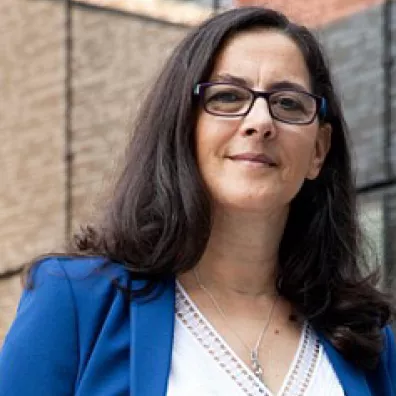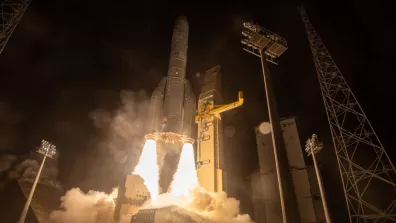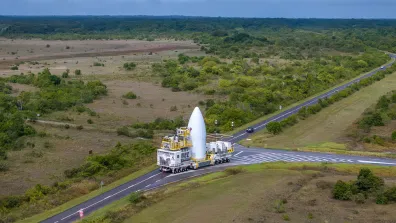Tuesday 29 April, the Biomass satellite, built by Airbus Defence & Space for the European Space Agency's (ESA) Earth Explorer programme, was placed into Sun-synchronous orbit at an altitude of 666 kilometres by the Vega-C launcher operated by Arianespace from Europe’s spaceport at the Guiana Space Centre (CSG).
The launch is the 26th from the CSG for the Vega series since entering service at the launch base in February 2012. Designed to loft small satellites into low Earth orbit, Vega complements Ariane 6 by guaranteeing the ability to launch all sizes of satellite into a full range of orbits.
Watch the launch
This latest success for Vega-C confirms Europe’s versatile and independent access to space, proving once more the excellence, availability and performance of the Guiana Space Centre, Europe’s spaceport. CNES is today proud to be playing its part in this wholly European adventure. I would like to congratulate the teams at ESA, ASI, Avio, Arianespace and across the European space industry, and of course all the teams at the CSG and CNES, who have once again demonstrated their professionalism.
- CNES Chairman & CEO

Better understand the impact of forests on the climate
Proposed by the CESBIO biosphere research centre as the seventh mission of ESA’s Earth Explorer programme, Biomass is designed to map forest biomass and height in all types of forests across the globe. To accomplish this mission, the satellite is carrying a P-band synthetic aperture radar (SAR) capable of penetrating through forest canopies to precisely measure their biomass and ability to store carbon, and hence to gain a deeper understanding of the role of forests in the carbon cycle and climate change. Biomass will also enable scientists to regularly survey subsurface geology, arid regions and polar ice caps, providing global coverage every nine months for at least five years. These data will help to assess the impact of deforestation, track yearly loss of biomass and predict the evolution of forest ecosystems.
A major innovation of the mission lies in its radar’s ability to provide a 3D view of forests with a resolution of 50 to 100 metres, thus delivering new insights into their dynamic mechanisms and their role in the carbon cycle. More broadly, Biomass is aiming to understand and predict the impact of forests on Earth’s climate and biodiversity, and to guide actions to preserve and manage natural resources.
I hail this successful launch of Biomass, a key mission for improving our understanding of the land component of the carbon cycle.
- Head of CNES’s Earth Observation programme

CNES's involvement
CNES’s involvement in Biomass dates back to its Science Survey Seminar in Biarritz in 2009, since when the French scientific community has offered its unstinting support to the mission in all areas. The agency took part in the TropiSAR aerial survey campaign in French Guiana and the AfriSARau campaign in Gabon. It is also contributing to the GEO-TREES initiative led by an international science team to develop a network of 100 high-quality reference sites for gauging forest biomass around the world, including Paracou and Nouragues in French Guiana.





